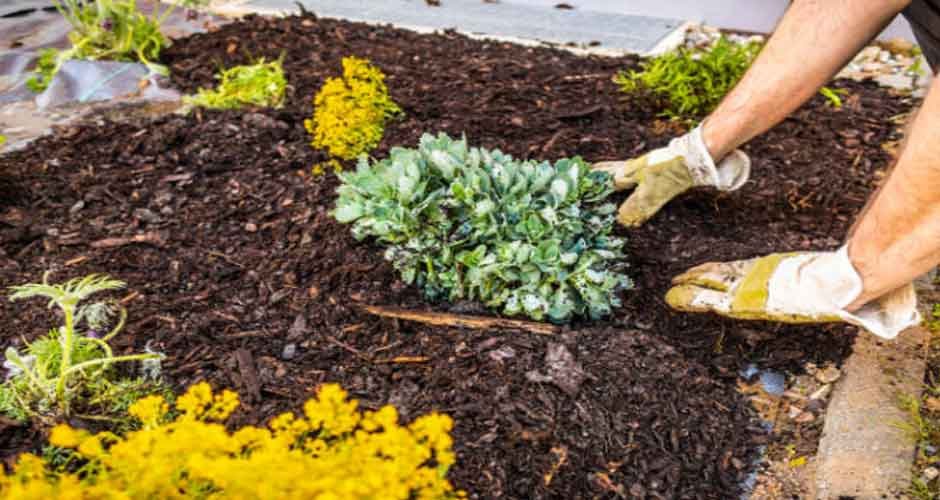Are you looking to create a welcoming and attractive outdoor space? Do you need guidance on regular tree maintenance, flower gardening, and other landscape work? These low-maintenance landscaping tips for rental homes will help you spruce up your property and attract more tenants. Renters and landlords seek the charm of a well-kept yard without the hassle of high-maintenance care.
From stress-free hacks to minimal plants, this guide is perfect for property owners who don’t have much time but still want a beautiful, low-maintenance haven. After that, we’ll explore the importance of outdoor maintenance and how boosting your curb appeal can have practical benefits.
Low Maintenance Landscaping Tips for Rental Homes
● Opt for Native Plants
Choosing plants native to your area is a game-changer.
Investing in plants that naturally thrive within your local climate and soil reduces the need for a particular intervention. Besides requiring less effort, The Maryland and Delaware Management team says that it can also save you money. Native plants are more resilient and less needy regarding water, fertilizer, and pest control, saving time and resources.
● Incorporate Perennials
Enjoy consistent greenery for your property by incorporating perennials in your landscaping. Unlike annuals that only last for a season and require replanting yearly, perennials can weather the storms and shine. Thus, your garden can continue to look lush month after month.
● Use Mulch

Make your garden beds look neater by adding some mulch to the mix. For the best results, opt for organic mulches like wood chips or bark, which enrich the soil as they decompose. Quality materials can also help retain soil moisture, suppress weeds, and reduce the need for watering and weeding. Connect with a professional property manager in Northern Virginia to contact reliable contractors for landscaping needs and high-quality products.
● Invest in Hardscaping
Eliminate maintenance needs to near zero by introducing hardscaping. Incorporate another layer of visual interest and texture to your property by adding non-living landscaping elements such as stones, pavers, and gravel. You can use these features to create paths, patios, or decorative rock gardens that enhance the property’s appeal without increasing the workload.
● Implement a Simple Irrigation System
A straightforward irrigation system, like a drip line or soaker hose, can save hours of watering time. These systems deliver water directly to the base of plants, reducing waste and ensuring that your landscaping receives the hydration it needs without constant attention.
Types of Low-Maintenance Plants
Low-maintenance plants are a fantastic option for those looking to simplify their gardening efforts without sacrificing the beauty of their outdoor space. These resilient, carefree plants require minimal attention while adding life and color to your garden.
● Succulents and Cacti
Succulents and cacti are practically synonymous with low maintenance. These plants can store water in their leaves or stems, allowing them to withstand prolonged dry periods. Some species can even thrive in deserts! Aloe, echeveria, and sedum are famous for their diverse shapes and easy care.
● Ornamental Grasses
Fountain, blue oat, and maiden grass are some examples of beautiful ornamental grass species that thrive with little care. Their ability to adapt to a wide range of soil makes them a versatile and straightforward landscaping idea.
● Ground Covers
Ground covers like creeping thyme, sedum, and vinca minor offer a green carpet that suppresses weeds and requires little care beyond occasional watering. They’re great for covering large areas where other plants might struggle, giving you more bang for your buck.
● Shrubs
Shrubs like boxwood, hydrangea, and juniper offer structure and interest with minimal upkeep. They can serve as focal points, borders, or backdrops for other plants in the garden.
● Herbs
Many herbs, such as rosemary, thyme, and oregano, are helpful in the kitchen and easy to grow. They often prefer less fertile soil and less frequent watering, perfect for a low-maintenance herb garden.
Importance of Outdoor Maintenance
● Curb Appeal and First Impressions
The exterior of a property is the first thing that potential tenants see. Well-maintained landscaping and outdoor areas enhance curb appeal, creating a positive first impression. Fill up your vacancies quicker by making your rental property stand out.
● Increases Property Value
Regular outdoor maintenance can increase a property’s value. Aesthetic improvements and functional landscaping can make a property more attractive to potential buyers, often resulting in a higher selling price. Even property owners who don’t plan to sell can earn more rental income by investing in landscaping.
● Supports Environmental Health
Well-maintained outdoor spaces can contribute to the local ecosystem’s health. Native plants support local wildlife, while healthy lawns and gardens can reduce erosion and improve air and soil quality. Additionally, proper care can reduce the need for chemical treatments, benefiting the broader environment.
Conclusion
In wrapping up our exploration of low-maintenance landscaping tips for rental homes, it’s clear that a well-kept outdoor space doesn’t have to come at the cost of endless hours of upkeep. You can significantly boost your curb appeal by choosing the correct elements, from mulch to hardscaping, and an efficient irrigation system.
Choosing low-maintenance plants like cacti and shrubs can reduce the burden of replanting and consistent watering. A local property manager could help select native minimal-care plants that increase your property’s beauty. They can also help you implement simple outdoor maintenance practices that contribute to a property’s curb appeal, increase value, and support environmental health. Maintaining the outdoor space of a home or property is more than just a chore; it’s an investment in the property’s value, safety, and aesthetic appeal.



